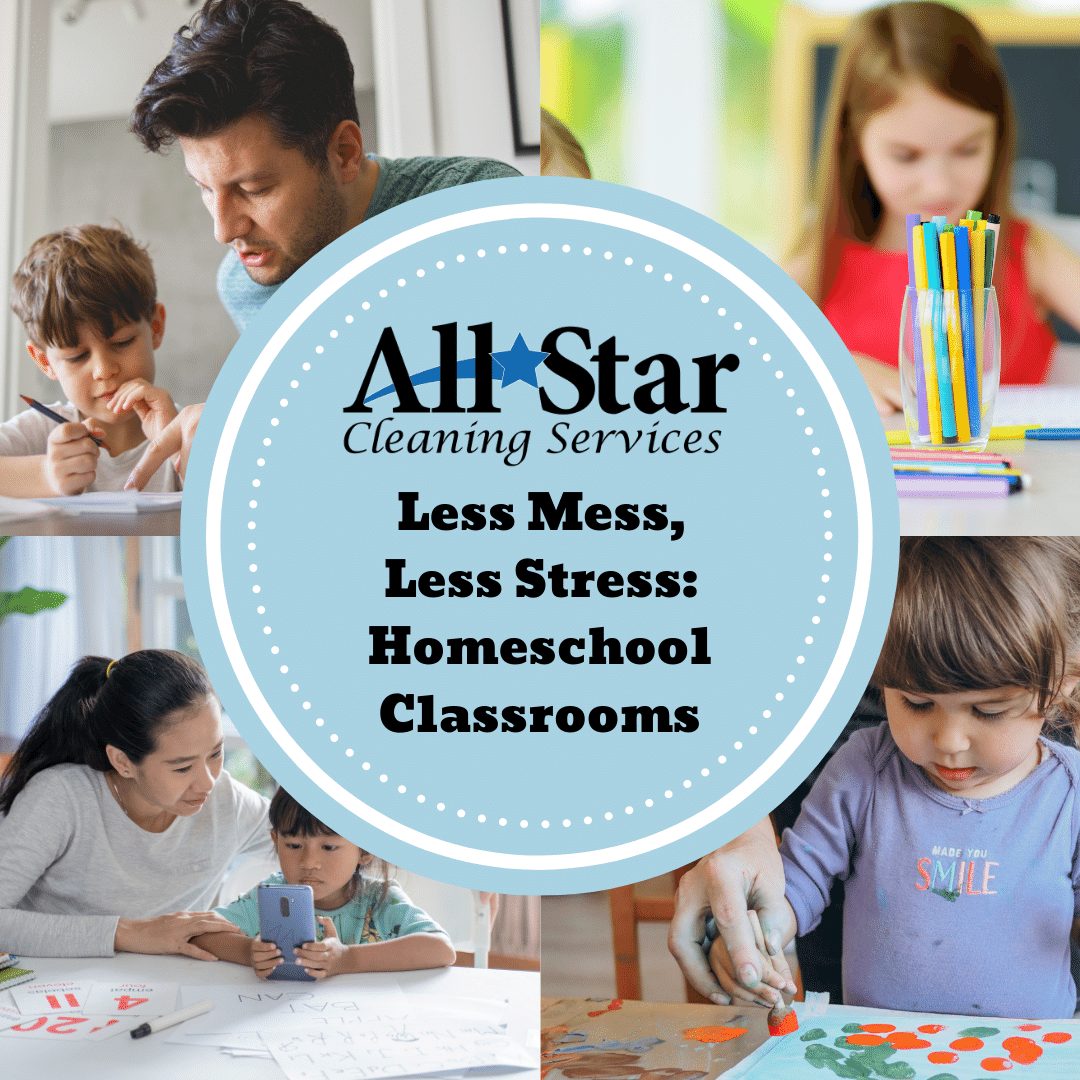Over the last few weeks we shared a lot of tips to set yourself up for success in your home-turned-classroom:
- how to create a fun, functional, and cute homeschool classroom space,
- how to avoid stressful homeschool messes and clutter, and even
- how to clean up common messes from school supplies.
Instead of reiterating those points, we’d like to let you in on a secret of ours: mise en place, or the idea that everything has a defined place to go back to.
The stress of mess is a one-two punch of your brain identifying “threats” (yeah, messes count! Ever step on a toy in the middle of the night?) and the addition of yet another thing you have to take care of to your to-do list.
One of the most satisfying things you can teach your children (or homeschool pod) is that everything has a place, everything has a purpose, and everything has a job, because it eliminates you having to check-in with your kids that their supplies have been put back.
Rather than endless reminders, yelling, and stress, focus on teaching the easiest thing: mise en place.
Everything Has a Place
When everything has a place, it’s easy to show that the crayons go back in a particular bin. It’s easy to over-do this with too many bins or trying to make things overly neat. What’s important is not perfect organization, but rather the idea of placing things back in their spot.
Everything Has a Purpose
Things that have like-purposes can be grouped together in a similar spot! Does a computer hold your food? No, so it shouldn’t stay on the table when you’re done. Does the shelf look happy when it’s empty? No, because it’s not fulfilling its purpose of holding supplies or books.
Everything Has a Job
Dust has a job – and that job is to remind us to check in on things that we don’t use very often! It also reminds us that regularly checking in on our space is important.
Kids are all about what’s happening in the present moment, so they can forget that over a long-haul, messes add up. Sometimes the most effective thing we can do is pause to put away our tools – and in fact, classroom helpers can have this as their weekly job.
Learning has to come first. When you’re focused on teaching and the chores are piling up, it’s time to call us to help with the housekeeping: (970) 215-2224

